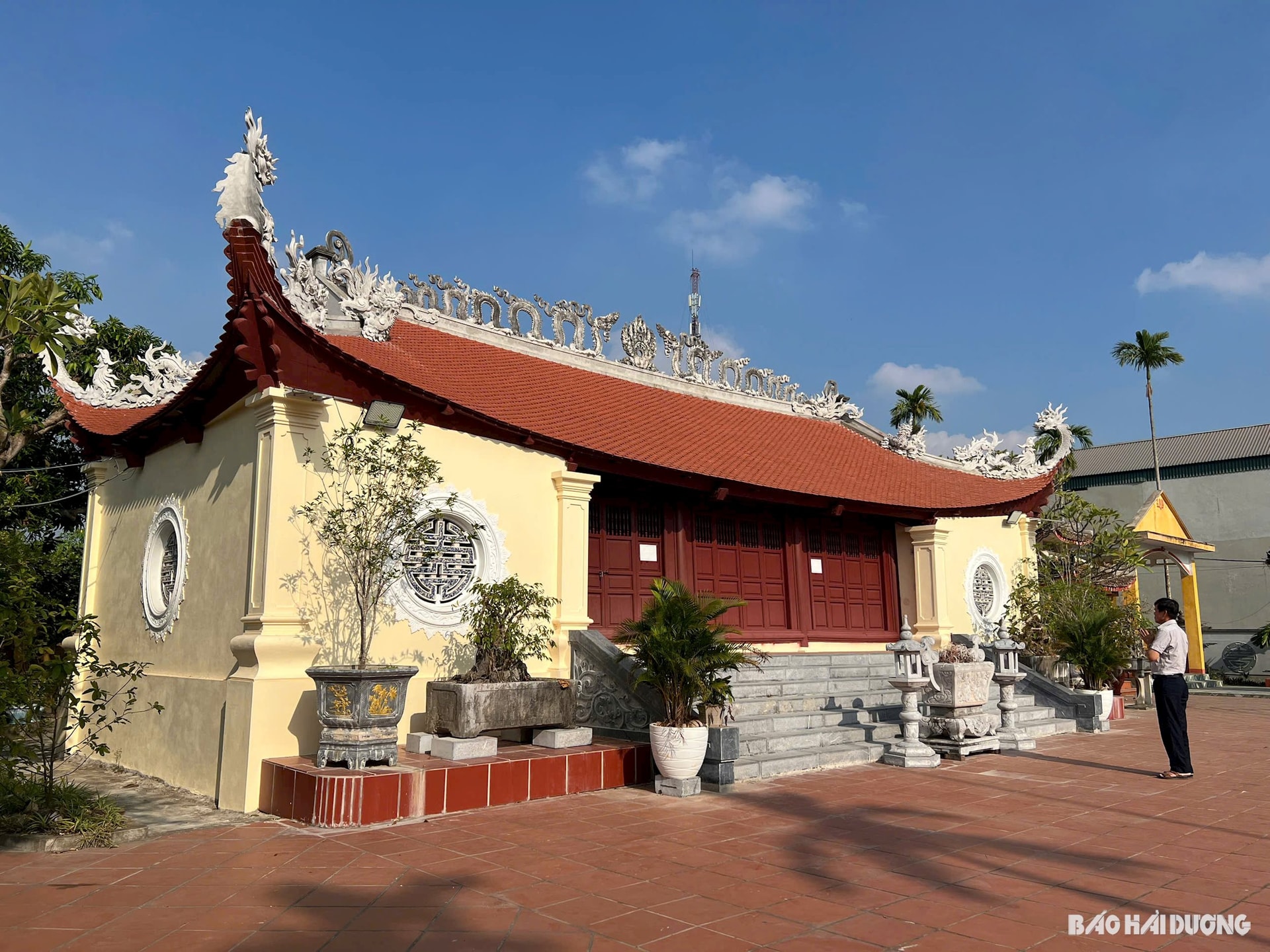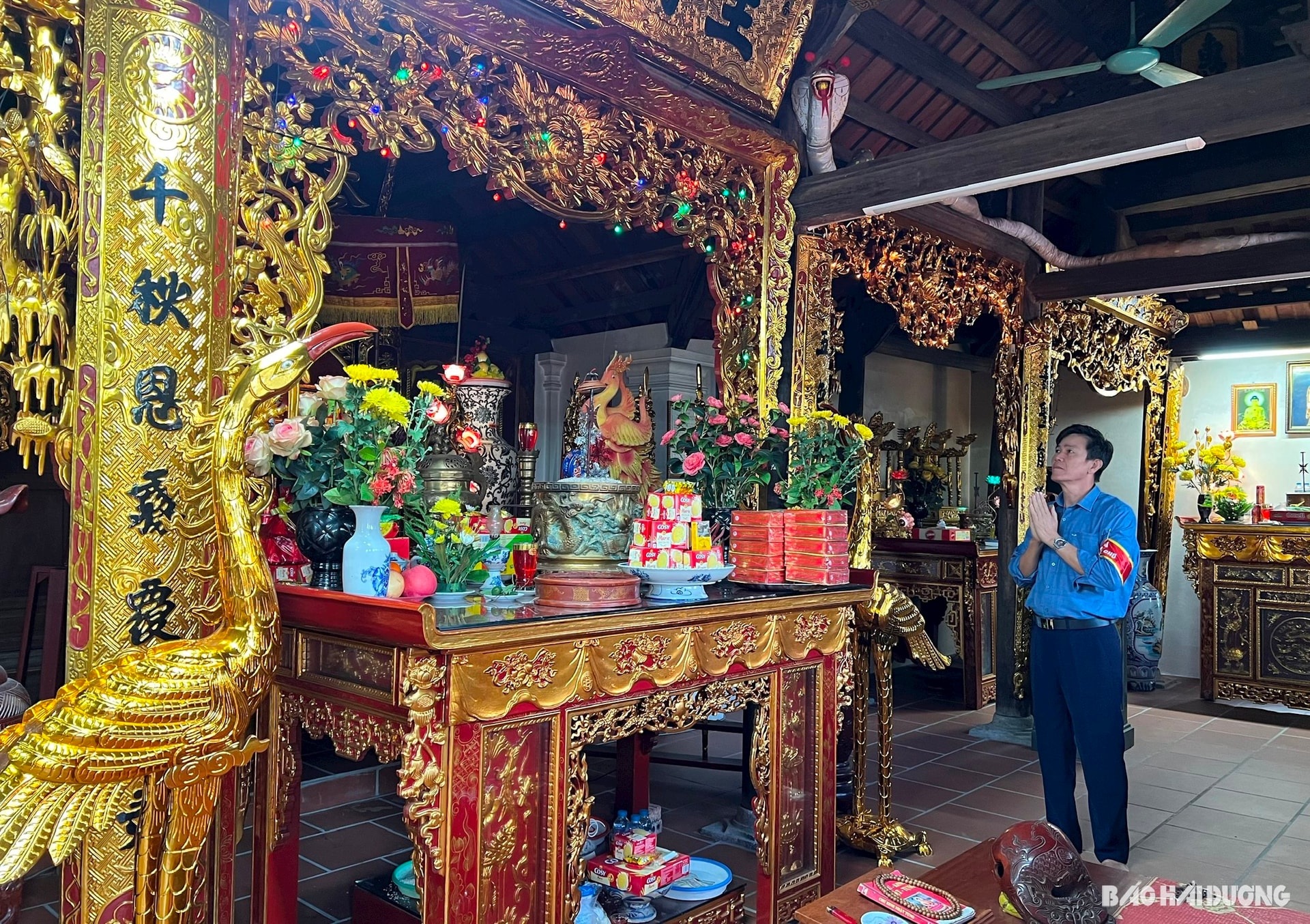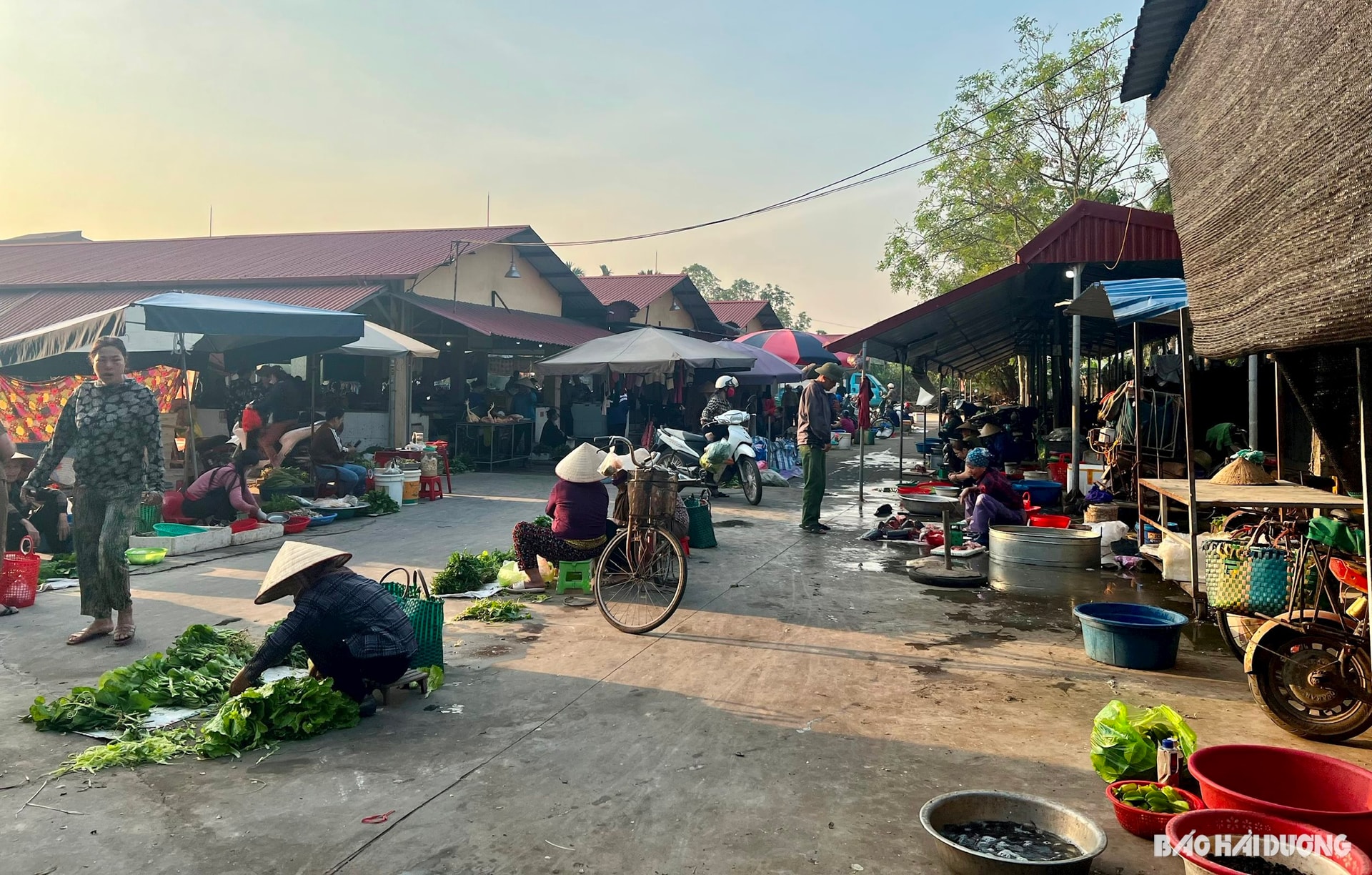Cam Che Temple in Du La village, Cam Che commune (Thanh Ha, Hai Duong) is the place to worship Queen Mother of Ly Dynasty Hoang Thi Hong. However, people know the temple better by the name of Cho Chay Temple. So why is the temple called this?

The King's Anger
According to historical records, in the year of Tan Mao (1171), King Ly Anh Tong inspected the coastal region and passed through Cam Che land. He saw the beautiful landscape and dense population. Feeling moved by the peaceful and fertile land, the king walked around the area to enjoy the scenery and learn about the lives of the people here. While visiting, the king heard a clear singing voice coming from the mulberry garden:“The King has a lot of silver and gold/ His supreme power, please do not forget/ I hope he accumulates virtue and cultivates virtue/ In the future, his career will forever be recorded in history”.
The song moved the king, so he ordered his soldiers to find the singer. From the first moment they met, King Ly Anh Tong fell in love with the young girl with a lovely face, cleverness, and virtue, so he brought her to the palace to be his concubine. She was Hoang Thi Hong, affectionately called Hoang Thi by the people.
Hoang Thi Hong was the eldest daughter in a family of three sisters in Dia La village (now Du La hamlet). Hoang Thi's parents were virtuous but had no children. With sincerity and prayers, they were finally able to have three daughters. The two younger sisters, Hoang Thi Quynh and Hoang Thi Que, were beautiful and virtuous, but Hoang Thi Hong was the most intelligent and quick-witted.
Hoang Thi was good at herding buffalo, growing mulberry trees, raising silkworms, weaving silk and was a bright student. She was cheerful, lively, liked to play and be mischievous, so she often played tricks to win or lose. When she won, Hoang Thi was carried back to the village by the children. Her palm had a pattern in the shape of the word "king".
Since returning to Thang Long capital, enjoying a luxurious life, Hoang Thi missed her parents and her homeland terribly. The King understood her feelings and allowed her to return to visit her hometown.
Returning to her hometown, seeing that the people were still poor and miserable, she used the gold and silver given by the king to establish a market, named Cam Che market. At the same time, she ordered people to build roads, build bridges, and dredge rivers to help people expand their trade and commerce, creating a bustling countryside.
Missing his concubine endlessly, King Ly Anh Tong summoned Hoang Thi back to the palace. Legend has it that before returning home, the concubine was pregnant with the king's child but did not know it. On the way back to the capital, passing through a small village in Kinh Bac, stopping to rest at a small inn, the tea seller said:"The Queen is pregnant with the king's child. If she does not report to the eunuch, she will be guilty.". Afraid of being implicated, she covered herself with a shower curtain and committed suicide in the lake. The maids could not find her body.
Hearing the news of the death of his concubine Hoang Thi, the king was saddened and angry, thinking that he had lost his wife and children because he let his wife return to her hometown. So he ordered his soldiers to burn down the market, which is why people later called it Cho Chay.
When they heard the news of Hoang Thi’s death in a foreign land and witnessed the soldiers burning down the market, the villagers made a petition and reported it to the king. One night, King Ly Anh Tong dreamed that his concubine came back to tell him: “SonnYou have turned into a fairy. If you love each other, please don't worry. Do everything you can. If it benefits the people and the country, I will be happy.".
Thinking that the burning of the market was hasty and temporary when the cause was not yet clear, the king provided silver and gold to rebuild the market to be more spacious and built a temple next to the market to honor Hoang Thi Hong as Thanh Hoang. Later, the succeeding kings honored Hoang Thi as the concubine of Ly Dynasty, Queen Mother. The temple worshiping Hoang Thi was also called Cho Chay temple by the people.
Pride of Cam Che people

Based on archaeological documents, the system of steles, royal decrees, parallel sentences, large characters, and village conventions of Phuong La and Du La villages, Cho Chay Temple was built in the 12th century. Under the Nguyen Dynasty, the temple was located on a beautiful land with 5 front rooms, 3 middle rooms, and 3 back rooms. The temple yard was large, with many ancient trees and majestic bronze pillars. During the resistance war against the French, most of the temple was demolished and damaged over time.
In 1997, responding to the people's wishes and aspirations, the local government rebuilt the temple on the old foundation. The temple was reconstructed from two old houses, made of ironwood, with a T-shaped architecture. The temple is a beautiful structure, with a traditional tiled roof, and corners with delicate and vivid reliefs of Bodhi leaves and dragons and phoenixes typical of the Ly Dynasty.

Cho Chay Temple Festival takes place from the 6th to the 13th of the second lunar month every year. According to Le Thi Nhu (85 years old), the head of the temple, from the day the temple was restored until 2023, the festival will take place from the day Queen Mother Hoang Thi said goodbye to the villagers to return to the capital until the time she passed away in Kinh Bac. Cho Chay Temple Festival attracts a large number of visitors, especially small traders and traders in Cho Chay who owe a great debt of gratitude to Thanh Hoang.
To this day, the market is still bustling and crowded, and is the largest market in the region. Therefore, many generations are grateful to the person who founded the market.
Queen Mother Hoang Thi Hong has been the pride of Cam Che people for generations. Thanks to her establishment of the market, the people here have a prosperous life. The temple of the Queen Mother faces Chay market as if to protect and watch over generations of villagers as they make a living, do business, and prosper day by day. Therefore, local people and traders in Chay market are always willing to contribute to renovate and embellish the temple.
In 2005, Cho Chay Temple was recognized by the Provincial People's Committee as a provincial-level historical and cultural relic.
HOANG LINH